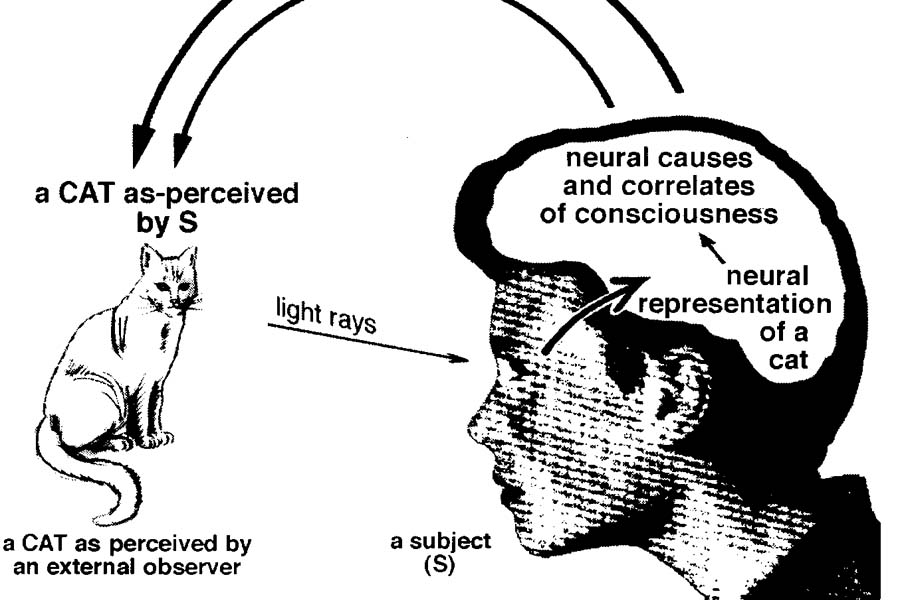If we identify biological markers for PTSD, it could significantly contribute to settling debates within the field regarding what experiences should be considered traumatic. The study emphasizes the foundational question of whether we should include events like racism or pandemic stress in PTSD diagnoses.
What if memories aren't just echoes of the past, but active participants in our present reality? In the quest to understand the phenomenon of trauma, scientists have found in a brain study that suggests traumatic memories are processed as present experiences. In this article, let us dive into understanding the latest scientific findings regarding the neuroscience of trauma, memories, experiences, and more." Looking at traumatic memories through a phenomenological lens reveals that they are not just fixed past events. According to neuroscientist Daniela Schiller, traumatic memories are active and dynamic entities that shape our present experiences. This means that they not only affect our thoughts but also impact our physical sensations, challenging the traditional separation of mind and body. PTSD is also recognized as an intersubjective experience, as societal influences play a significant role. The metaphor of traumatic memories dominating the canvas of consciousness aligns with the active and dynamic nature of our consciousness.
Looking at traumatic memories through a phenomenological lens reveals that they are not just fixed past events. According to neuroscientist Daniela Schiller, traumatic memories are active and dynamic entities that shape our present experiences. This means that they not only affect our thoughts but also impact our physical sensations, challenging the traditional separation of mind and body. PTSD is also recognized as an intersubjective experience, as societal influences play a significant role. The metaphor of traumatic memories dominating the canvas of consciousness aligns with the active and dynamic nature of our consciousness. Emotions, integral to subjective experience, often manifest as physiological responses, linking the emotional state to tangible changes in the body. The physical basis of consciousness is a focal point in understanding how subjective experiences emerge from the intricate workings of the brain. While the precise nature of this relationship remains a subject of ongoing scientific exploration, consciousness as a purely emergence phenomenon is not held as a consensus among neuroscientists and philosophers.
Emotions, integral to subjective experience, often manifest as physiological responses, linking the emotional state to tangible changes in the body. The physical basis of consciousness is a focal point in understanding how subjective experiences emerge from the intricate workings of the brain. While the precise nature of this relationship remains a subject of ongoing scientific exploration, consciousness as a purely emergence phenomenon is not held as a consensus among neuroscientists and philosophers.
Neuroscience of Trauma: An Overview
Recent research from Yale University and the Icahn School of Medicine at Mount Sinai peels back the layers of this mystery. The study introduces an unexpected player in the realm of traumatic memories – the posterior cingulate cortex (P.C.C.). This brain region, associated with daydreaming, emerges as a silent conductor orchestrating the symphony of our experiences. How does the P.C.C., a stage for introspection, become a central character in the stories of trauma?Memory Engagement in PTSD
The research involved brain scans of 28 individuals with PTSD as they listened to recorded narrations of their memories. Notably, when participants recalled sad memories, such as family deaths, the hippocampus, responsible for organizing memories, showed heightened engagement. In contrast, traumatic memories, including sexual assaults and terrorist attacks, did not activate the hippocampus, indicating a distinct neural response.Debates in the PTSD Field
The study's findings are considered seminal, establishing distinct pathways for traumatic memories and highlighting less-explored brain areas. The role of the posterior cingulate cortex in reliving memories and seeking self-relevance may offer insights into heightened reactions triggered by sensory reminders.Biological Markers and PTSD Diagnosis:
The Phenomenon of Traumatic Memories: Lived Experiences
Let's take a step back and consider the phenomenon of traumatic memories. Neuroscientist Daniela Schiller invites us to ponder: What if these memories aren't just snapshots frozen in time? What if they are living fragments, actively participating in our present, dominating the canvas of our consciousness? Have you ever felt the weight of a memory not as a distant recollection, but as an entity that shapes your very perception of the world?
Are experiences and memories physical entities?
It is understood that feelings and experiences in living organisms are intricately tied to physical interactions with the environment. Sensory perceptions, such as sight, touch, hearing, taste, and smell, are the conduits through which organisms engage with the physical world. These sensory inputs lead to complex neurological processes in the brain, where stimuli are interpreted and integrated, giving rise to conscious experiences.
Trauma: Does Pain Reside in the Past or Present?
Think about pain – physical or emotional. Is it confined to the past, or does it seep into the present moment, coloring our interactions and perceptions? Philosophers like Jean-Paul Sartre delved into the concept of lived experiences. Could traumatic memories be fragments of our existence that refuse to remain in the past, constantly influencing our present awareness?The relationship between past pain, whether physical or emotional and its reverberations into the present moment is a nuanced and intricate aspect of human experience. Traumatic memories, in particular, can be viewed as fragments of our existence that refuse to remain confined to the timeline of the past. Instead, they exert a continuous and sometimes intrusive impact on our present perceptions, interactions, and overall mental landscape. Sartre's notion of "bad faith" becomes particularly relevant in this context, as individuals grapple with the complexities of self-deception regarding their freedom and responsibility in the face of past traumas.This dynamic interplay between past pain and present awareness is not only a part of neuroscientific studies but also a subject extensively explored in psychological and philosophical inquiries. The brain's intricate mechanisms of encoding and recalling traumatic memories contribute to the enduring nature of their influence. The emotional and cognitive imprints left by past pain can manifest in various ways, from subtle alterations in everyday decision-making to more overt symptoms like flashbacks, anxiety, or hypervigilance.- Also, read
Can We Rewrite Our Stories?
Experts suggest prolonged exposure therapy and EMDR (Eye Movement Desensitization and Reprocessing). But Are they more than clinical interventions? Could they be philosophical exercises, inviting us to reconstruct our narratives? Ilan Harpaz-Rotem suggests that these treatments align with the philosophical notion of understanding and organizing our experiences. Through therapeutic interventions, we can transform traumatic memories into stories we can navigate with an understanding.Neuroscience of Trauma: Is science enough for it?
The exploration of PTSD extends beyond scientific examinations of brain scans and delves into the deeply personal and subjective realm of individual stories. The essence of our narratives, shaped by our experiences, is a complex interplay of memory, emotion, and cognition.Healing trauma involves scientific inquiry and personal reflection. Therapeutic processes help integrate past experiences into present understanding, fostering resilience. It's a deeply human pursuit, navigating individual narratives.Criticisms of the study
While intriguing, the study faces criticisms, including the absence of a comparison group without a PTSD diagnosis and uncertainties about the timing of traumatic events. The research, while not conclusive, prompts consideration of its applicability to ongoing debates over PTSD treatment approaches and the inclusion of exposure to traumatic memories.Neuroscience of Trauma: Conclusion
Our minds are like a theater, where memories, pain, and experience converge. This study not only tries to analyze the neuroscience of trauma but also urges us to explore our narratives and ask more questions. How can we truly overcome a traumatic memory? The answers may lie in the ongoing exploration of the stories that shape us. Discovering the value of the journey itself as we navigate our minds.- meanwhile, also read our review of Galaxy Tab S9 FE

To say something about myself, I have been writing tech and gadgets from 2021. Although coming from a non technical studies background, I'm someone who is always fascinated by the latest gadget and tech innovations, circling around. Besides writing, you'll find me listening music and aligning the stars through astrology and sometimes even, tarot cards! 😉🧿
Comments
No comments yet. Add a comment to start a discussion




